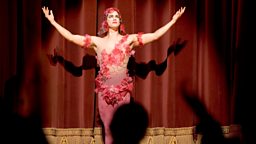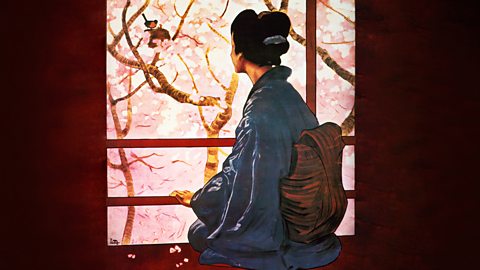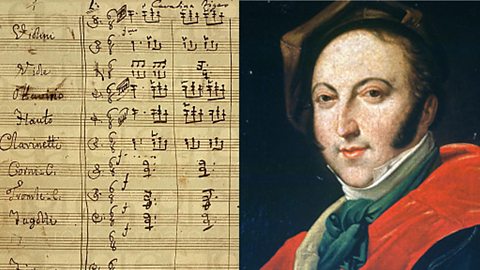Seven disastrous classical music premieres that went on to be hits
Opening night jitters and stumbles are to be expected, but many of our most famous and best-loved operas and symphonies were utter disasters when they first appeared before the public. It seems inconceivable to us now that masterpieces like Bizet’s Carmen and Puccini’s Madame Butterfly earned boos and derisive laughter, but they did. Here are the first night frights that many great works endured…

The butterfly falls
Nowhere was an audience more vocal in its disapproval than when Madame Butterfly fluttered into being at La Scala in 1904. The audience was already resistant to the opera as Puccini had been so secretive about the narrative. Things didn’t go well from Butterfly’s entrance, as “Quanto cielo” sounded too reminiscent of a passage from his earlier opera, La bohème. This triggered an annoyed outburst of “bohème, bohème!” from the audience. As the performance proceeded, the noise level from the audience rose to such an extent that the singers were unable to hear the orchestra. Laughing, hissing and jeering, the audience pointed with delight when the soprano Rosina Storchio’s kimono billowed out and shouted “Butterfly is pregnant!” and then followed it up with suggestions as to the possible father (Storchio was having a well-publicised affair at the time). In an idea which now seems astonishing in its riskiness, the performers were provided with bird whistles to signify the dawn. This provoked animal calls of all types from a near hysterical audience. Puccini described the opening night as “a lynching” and set about making numerous alterations to the piece.

Why did Puccini have to rewrite the main theme to Madame Butterfly?
When Madame Butterfly opened at La Scala, Milan on February 14th 1904 it lasted one night
A shocking night at the opera
Even those of us who have never seen an opera can probably sing a little phrase from Bizet’s Carmen, but it too had a rocky start when it premiered at the Opéra-Comique in Paris on March 3, 1875. Its journey to the stage had already been difficult as the work was seen as immoral and too salacious for performance, featuring as it does a passionate gypsy woman who seduces a gallant soldier. The Opéra-Comique was known for its family friendly pieces and the audience was scandalised. Singer after singer declined to be involved for fear of what it might do to their reputations and the directors of the opera house were very nervous. Eventually the mezzo-soprano Célestine Galli-Marie agreed to play Carmen and the opera opened. Its reception was not exactly enthusiastic on the night, and the reviews were dreadful. Bizet died just three months later.
A disaster in E minor
Poor old Edward Elgar could foresee disaster with the first performance of his Cello Concerto on October 27, 1919 at Queen's Hall, London. He was infuriated by the lack of rehearsal time which he knew would result in a dismal performance. Elgar considered cancelling the entire premiere but continued out of respect for cellist Felix Salmond, who had been working on it for several months. The critics descried it as “lamentable”, and the audience hated it. Salmond seemed to want to forget he had ever played it, hardly performing it again and making no effort to teach it to his students. It is now one of the two most performed pieces for the cello.
Booing the Barber
One performer tripped over a trapdoor and had to sing a moving aria with blood pouring from his nose.
February 20, 1816 saw an extraordinary opening night of Rossini’s The Barber of Seville. Not only was the audience not quiet for a second with the cast having to compete with jeering and yelling, but Basilio (the seedy music teacher) tripped over a trapdoor and had to sing a moving aria with blood pouring from his nose. During the finale of Act I a cat wandered onstage and had to be unceremoniously booted into the wings. Rossini remained oddly optimistic even after this disaster, writing to his mother that people were looking forward to “its second evening when the music will be heard, something that did not happen last night from the beginning to the end.”
Listen to Tales From the Stave: Rossini's The Barber of Seville

Figaro! Why it's best to give audiences what they want
A discovery that age-old Figaro performing traditions weren't what Rossini actually wrote
The Rite of Spring has a fierce, pulsating rhythm which inspired one theatre-goer to accompany it on the bald head of the man in front.
Dance of danger
It is said that Serge Diaghilev, the man behind the Ballets Russes, was hoping for a scandal when he launched Stravinsky’s Rite of Spring to an over-excited audience on May 29, 1913 in Paris. And he certainly got it. The audience started to misbehave from the outset, people waved canes around in play-fights and men’s hats were yanked down over their eyes. The Rite of Spring has a fierce, pulsating rhythm which inspired one theatre-goer to accompany it on the bald head of the man in front. Critics struggled to hear the music over the riotous behaviour of the audience and no-one, to this day, is quite sure what inspired the skittishness.
A doughty diva
“...a fiasco. Was the fault mine or the singers? Time will decide.” So wrote Giuseppe Verdi to his secretary-pupil Emanuele Muzio in 1863 after the premiere of La traviata in Venice. The performance was conducted in modern dress, which earned the audience’s disapproval, as did the fact that the heroine is a courtesan who is portrayed sympathetically. It also didn’t help that the soprano playing Violetta, the high class prostitute, was too overweight for the role. Verdi however was philosophical, saying “future generations will appreciate this opera.” How right he was.
He was a well-known drunk and he’d achieved a zombie-like state when he began conducting the under-rehearsed symphony.
Conducting in his cups
To have your premiere ruined by your own conductor is hard luck indeed. Sergei Rachmaninov’s Symphony No. 1 was not exactly given the greatest start when the conductor, Alexander Glazunov, arrived on the podium, plastered. He was a well-known drunk, reportedly swigging from bottles when teaching students at the St Petersburg Conservatory and he’d achieved a zombie-like state when he began conducting the under-rehearsed symphony. Rachmaninov hid on a spiral staircase in horror and then ran away to escape the booing. He began a course of psychotherapy shortly afterwards.
Classical music on Radio 4
-
![]()
Tales From the Stave: Puccini's Madame Butterfly
A celebration of the autographed manuscript of Puccini's masterpiece, Madame Butterfly.
-
![]()
The Butterfly Effect
Soprano Amanda Roocroft explores the impact of Madame Butterfly in performance and popular culture.
-
![]()
Tales From the Stave: Rossini's The Barber of Seville
Frances Fyfield explores the handwritten manuscript of one of the most popular staples of Opera Houses across the globe.
-
![]()
Soul Music: Elgar's Cello Concerto
Personal stories set against the powerful emotional impact of Elgar's lyrical and passionate composition.




